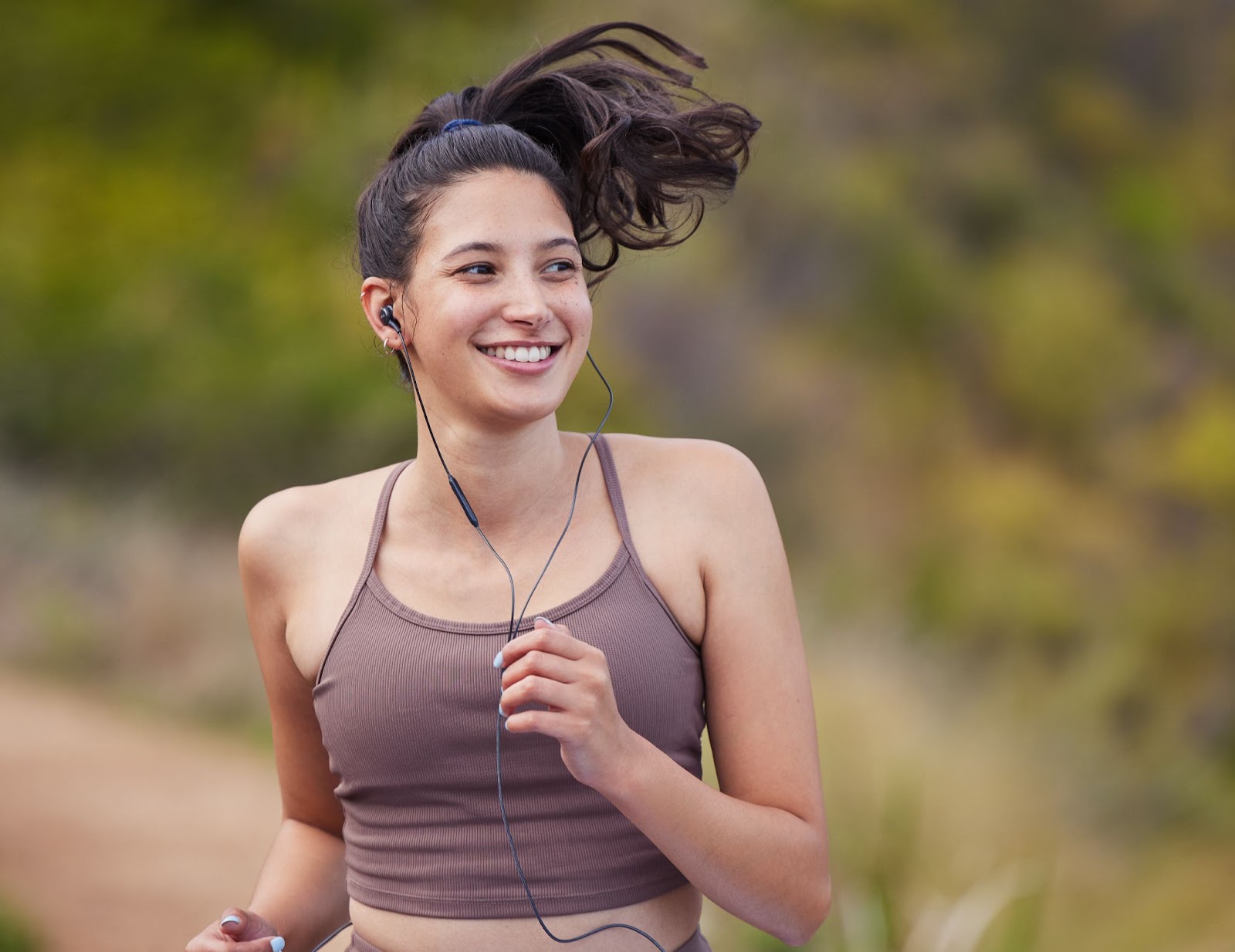Calling all runners far and wide! We’re talking everyone from experienced marathoners, elite level sprinters, weekend joggers, morning movers, and those looking to incorporate running into their fitness routines. Heck, we’ll also include all of you who think you hate running. So basically, everyone — listen up. Because you could very well become a better runner after reading the ins and outs (or should I say inhales and exhales) in this blog.
Are you hitting the wall wayyyy too soon, worried your heart will beat right outta your chest, or gasping for air by the time you reach the end of your cul-de-sac? Or maybe you’re pretty comfortable running, but looking to up your game and boost your endurance. It often comes down to what’s going down inside your lungs.
Breathing is our bodies’ fuel pump, bringing us all that sweet oxygen to our muscles and giving us the energy we need to perform. So before you lace up and take your next step, read our essential breathing tips for better, more efficient running.
Nasal vs. Mouth Breathing
First off, let’s run through the age old debate — nose or mouth? Now, for many other fitness methodologies, the nose tends to win out. But in running, it’s a bit more complicated than that. Both nose and mouth breathing can and should be used during your run, it just depends on exactly what kind of running you’re planning on doing. For easy runs, comfortable jogs, and longer distances, nasal breathing is more efficient. For fast, all-out sprints, you’ll need a quicker resource of oxygen and so the mouth is preferable. Although, this isn’t a hard and fast rule – in fact many experienced runners opt for a combo nose-in, mouth-out technique to maximize their oxygen intake.

Rhythmic Breathing
Running is a very high-intensity exercise, one that involves putting your body through a fair amount of stress. One easy way to reduce that stress is to synchronize your breathing with your steps. And no, that does not mean inhale-right foot-exhale-left foot, you’d probably pass out at that rate. But a simple rhythm to coincide with a certain amount of steps is an optimal way to run. For starters, you can try breathing in for two foot strikes, and then out for the next two. You’ll have to be mindful to change up the order of your breaths while doing this technique, because exhaling on the same side of your body for too long could lead to an uneven strain. If you can breathe in rhythm at an odd ratio, such as two strides inhaling/one stride exhaling, or three strides inhaling/two strides exhaling, this variance can boost your endurance and also reduce your risk of injury.
Diaphragmatic (Belly) Breathing
Don’t be intimidated by the impressively scientific-sounding name, this technique just means breathing from the ole’ bread basket. Belly breathing involves engaging your diaphragm, which is a muscle close to your lower rib section, to help you expand your lungs further and take in more air (why do you think this technique is so big with opera singers?). This deep breathing technique is also effective at slowing your heart rate during times of immense stress. To be able to do this effectively requires just a bit of practice, and we recommend lying on your back at home to get used to the movements. Here’s how: from the floor, breathe deeply through your nose, fill your belly with air while also pushing your lower stomach muscles down and out. Also make sure to make your exhales longer than your inhales. When you feel you’re ready to take the technique out for a test-run, be sure to do it while moving at a slower pace.
Box Breathing
Box breathing is another effective tool in your running arsenal. This involves breathing in for a count of four, holding for four, exhaling for four, and holding for four. Box breathing is useful in a variety of situations, and can help you reduce cramps, calm down, stave off fatigue, and boost performance overall. You might not use this method through your entire run, but it may be able to get you through some tough moments.
Pro-Tip: Keep it Fresh
One often-overlooked factor in your oxygen intake during runs is timing. If you’re planning on running outside (and we hope you do, it’s purrty out there!), and you live in an urban, heavily trafficked area, make sure to go running when there aren’t that many cars, trucks, and pollution around. That way you can ensure that you’re getting nothing but good, clean oxygen in ya, and not much else.
As with all these breathing techniques, the end goal is to find what works best for your body’s unique needs. We’re all different, so make sure you try each one of these methods out for yourself, take note of how you feel, and incorporate only the most effective technique.
And if/when you find yourself needing a lil’ extra motivation, look no further than Studio SWEAT onDemand! We offer a huge library of virtual fitness classes that you can do from the comfort of anywhere! Along with our onDemand running classes, we also offer Indoor Cycling, TRX, HIIT, Yoga, Pilates, Kickboxing, Barre, Bootcamp, and tons of others! And with our 7-Day Free Trial, you can experience everything we’re about with no commitment. So sign up, lace up those sneakers, and let’s get running!









Comments - 0